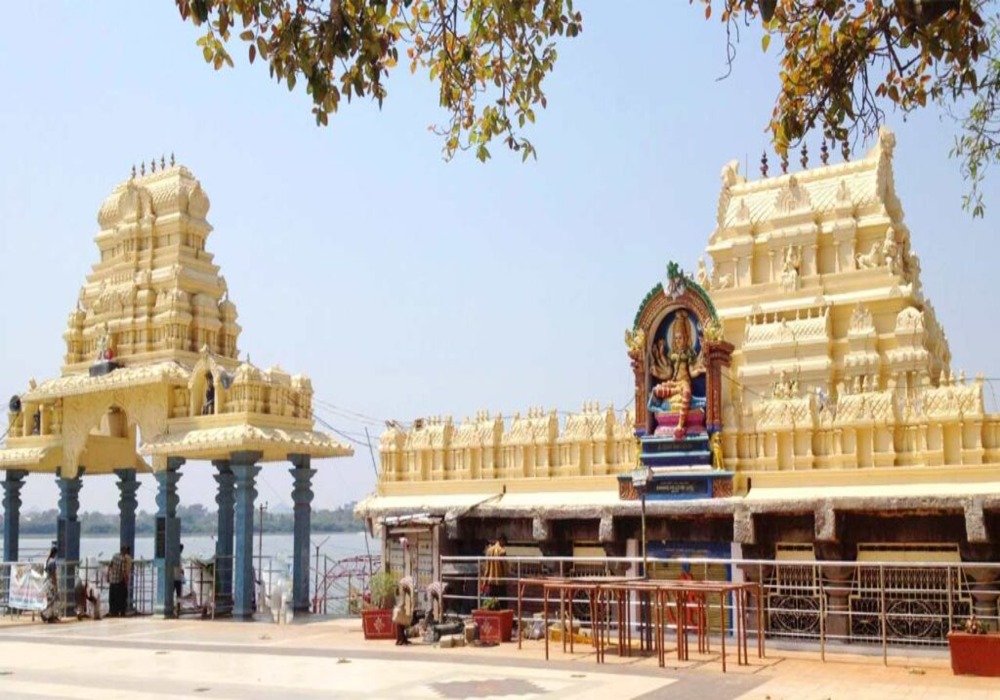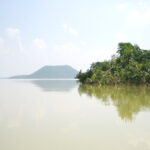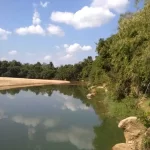Bhadrakali Temple is located in Warangal, a city in the southern Indian state of Telangana. It is a popular pilgrimage destination among the locals and tourists alike, who come here to seek blessings from the goddess and marvel at the temple’s stunning architecture.
History of Bhadrakali Temple
The Bhadrakali Temple is a famous Hindu temple located in the city of Warangal in the Indian state of Telangana. The temple is dedicated to the Hindu goddess Bhadrakali, who is considered to be a fierce form of the goddess Shakti.
The history of the Bhadrakali Temple dates back to the 7th century, when the region was ruled by the Kakatiya dynasty. The Kakatiya rulers were great patrons of art and architecture, and they built several temples and monuments in their kingdom. The Bhadrakali Temple was one of the most important temples built during their reign.
The original temple was a small structure built of mud and thatch. Over the centuries, the temple was renovated and rebuilt several times. The current structure was built in the 12th century by the Kakatiya ruler Rudrama Devi. The temple was further expanded and renovated by the rulers of the Vijayanagara Empire in the 16th century.
The Bhadrakali Temple has a unique architecture that combines the styles of the Kakatiya and Vijayanagara empires. The temple has a central shrine dedicated to Bhadrakali, surrounded by several smaller shrines dedicated to other deities. The temple also has a large tank called the Bhadrakali Cheruvu, which is believed to have been built by the Kakatiya rulers.
The Bhadrakali Temple is famous for its annual festival, which is celebrated during the month of Ashada (June-July). It attracts thousands of devotees from all over the region, who come to offer prayers and seek the blessings of the goddess.
Today, the Bhadrakali Temple is one of the most popular tourist attractions in Warangal, and is visited by thousands of devotees and tourists every year. The temple is a testament to the rich cultural heritage of the region, and is a symbol of the enduring faith of the people of Telangana.
Architecture of Bhadrakali Temple
The architecture of the Bhadrakali Temple in Warangal is a unique blend of the styles of the Kakatiya and Vijayanagara empires. The temple has a rectangular layout and is built on a raised platform with a flight of stairs leading up to it.
The main entrance to the temple is through a towering gopuram or gateway, which is decorated with intricate carvings of deities and mythical creatures. The gopuram leads to a large courtyard with a central shrine dedicated to Bhadrakali.
The shrine is built in the Kakatiya style and has a simple yet elegant design. It has a square base with a pyramidal roof, and is adorned with carvings of the goddess and other deities. The sanctum sanctorum is believed to house an ancient idol of the goddess, which is said to be one of the oldest in the region.
The temple also has several other deities, such as Lord Shiva, Lord Vishnu, and Lord Ganesha. These shrines are built in the Vijayanagara style and have ornate carvings and sculptures depicting various scenes from Hindu mythology.
The temple’s architecture also includes several other features, such as a large tank called the Bhadrakali Cheruvu, which is believed to have been built by the Kakatiya rulers. The tank is a popular spot for devotees to take a holy dip and is surrounded by several small shrines.
Overall, the architecture of the Bhadrakali Temple is a testament to the skill and craftsmanship of the artisans of the Kakatiya and Vijayanagara empires. The temple’s unique blend of styles, intricate carvings, and elegant design make it a significant cultural and historical landmark in the region.
Timings
The temple is open to visitors from 4:00 AM to 8:30 PM every day. The best time to visit is during the festivals of Dussehra and Diwali, when the temple is beautifully decorated with lights and flowers.
Location
Bhadrakali Temple is located on the banks of the Bhadrakali Lake, near the Warangal Fort.
How to Reach Bhadrakali Temple
By Train: Warangal railway station is well connected to major cities in India, including Hyderabad, Delhi, Mumbai, Chennai, and Kolkata. From the railway station, you can take a taxi or a bus to the temple.
By Road: Warangal is well connected by road to major cities in Telangana and Andhra Pradesh. You can take a bus or hire a taxi from Hyderabad.
Nearest Places to Visit
Here are some of the nearest places to Bhadrakali Temple that you can explore:
- Warangal Fort: This ancient fort was built by the Kakatiya dynasty rulers in the 13th century and is a popular tourist attraction in the region.
- Thousand Pillar Temple: This temple is another famous landmark of Warangal, known for its exquisite architecture and intricate carvings.
- Ramappa Temple: Ramappa Temple is an 800-year-old monument that stands as a testimony to the ancient architectural excellence of India. It is a UNESCO World Heritage Site and is renowned for its intricate carvings and sculptures.
- Pakhal Lake: This scenic lake is a popular picnic spot and is located about 50 km from Warangal.
Conclusion
The Bhadrakali Temple is not just a place of worship, but also a historical and cultural landmark that reflects the glory of the region’s past. Its significance and popularity continue to grow with each passing year, as people from all walks of life come to seek the blessings of the fierce goddess Bhadrakali.
Frequently Asked Questions
Q. Is there an entry fee for Bhadrakali Temple?
A. No entry fee to visit Bhadrakali Temple.
Q. Are there any dress code restrictions to enter the temple?
A. Visitors are advised to dress modestly and avoid wearing shorts or revealing clothing.
Q. Can non-Hindus visit the temple?
A. Yes, non-Hindus are welcome to visit the temple and seek blessings from the goddess.
Q. Is photography allowed inside the Bhadrakali temple?
A. Photography is not allowed inside the shrine, but visitors are advised to be respectful and not take pictures outside the main temple.



